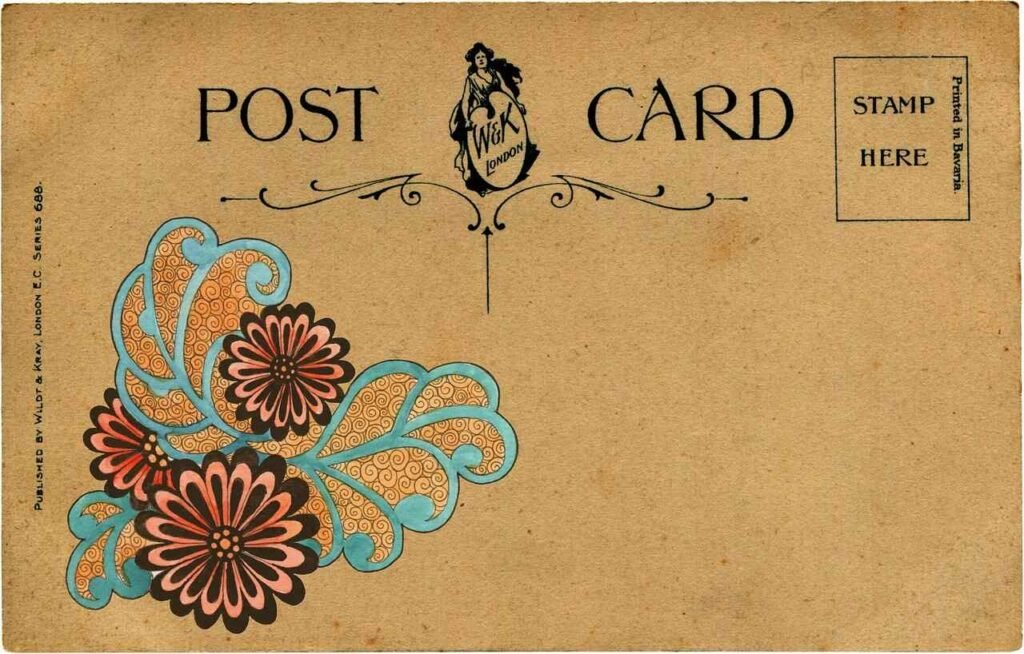In today’s digital world, traditional marketing methods like postcard marketing can still be incredibly effective. Postcards offer a tangible way to connect with potential customers, stand out from the digital noise, and deliver a memorable message. They can be used for a variety of purposes, from promoting a new product to inviting customers to an event. We will explore effective postcard marketing strategies that can help you maximize the impact of your campaigns.
Understanding the Basics of Postcard Marketing
Why Postcards Still Work
Postcards are a personal and direct way to reach your audience. Unlike emails that can be easily ignored or deleted, postcards are physically handled by the recipient, making them hard to overlook.
They are cost-effective, versatile, and can be used for various marketing purposes, such as announcements, special offers, or event invitations.
Setting Clear Objectives
Before you start designing your postcard, it’s crucial to define your goals. Are you trying to drive traffic to your website, increase sales, or promote an event?
Having a clear objective will guide the design and messaging of your postcard, ensuring it resonates with your audience and prompts them to take action.
Identifying Your Target Audience
Knowing who your audience is will help you create a postcard that speaks directly to them. Consider factors like age, gender, location, and interests.
The more specific you are about your target audience, the more effective your postcard marketing campaign will be.
Designing Your Postcard
Creating an Eye-Catching Design
The design of your postcard should grab attention immediately. Use bold colors, striking images, and a clean layout to make your postcard stand out. Your branding should be clear, and the overall design should be professional and appealing.
Writing Compelling Copy
The copy on your postcard needs to be clear, concise, and compelling. Start with a strong headline that grabs attention and communicates the main message.
Follow with a brief description that explains the offer or message in more detail. Use simple language and a conversational tone to engage the reader.
Including a Strong Call to Action
Every postcard should have a clear call to action (CTA). Whether you want the recipient to visit your website, call a phone number, or come to your store, make sure the CTA is prominent and easy to follow.
Use action-oriented language that tells the recipient exactly what to do next.
Printing and Mailing
Choosing the Right Printer
Selecting a high-quality printer is essential for ensuring your postcards look professional. Look for a printer that offers good quality printing, a variety of paper options, and competitive pricing.
Consider ordering a sample print to check the quality before placing a large order.
Deciding on Mailing Options
You have several options when it comes to mailing your postcards. You can handle the mailing yourself or use a mailing service. If you choose to do it yourself, make sure you have accurate and up-to-date mailing lists.
Using a mailing service can save time and ensure your postcards are delivered promptly.
Timing Your Mailings
The timing of your mailing can significantly impact its effectiveness. Consider the best time to send your postcards based on your target audience and campaign goals.
For example, if you’re promoting a seasonal sale, make sure your postcards arrive well before the sale starts. Timing your mailings strategically can increase the chances of your postcards being noticed and acted upon.
Leveraging Seasonal and Event-Based Campaigns
Timing Your Campaigns
Seasonal and event-based campaigns can significantly boost the effectiveness of your postcard marketing. Plan your mailings around key dates such as holidays, back-to-school seasons, or major industry events.
Sending postcards at the right time ensures that your message is relevant and timely, increasing the likelihood of a positive response.
Creating Themed Postcards
Design postcards that align with the theme of the season or event. Use seasonal colors, imagery, and messages to make your postcards more appealing.
For example, a holiday-themed postcard can include festive graphics and a special holiday discount. Themed postcards are more engaging and can capture the recipient’s attention better.
Promoting Limited-Time Offers
Seasonal campaigns are perfect for promoting limited-time offers. Highlight these offers on your postcards to create a sense of urgency.
Limited-time discounts, special deals, or exclusive products can encourage recipients to take immediate action, boosting your campaign’s effectiveness.
Enhancing Reach with Geographic Targeting
Focusing on Local Markets
If your business operates in specific geographic areas, focus your postcard marketing efforts on those local markets. Use geographic targeting to send postcards to households within a certain radius of your business location.
Localized campaigns can increase foot traffic and drive more sales from nearby customers.
Utilizing Geographic Data
Leverage geographic data to refine your targeting further. Consider factors such as neighborhood demographics, local events, and economic conditions.
Geographic data helps you tailor your message to the specific needs and interests of different areas, making your postcards more relevant and effective.
Partnering with Local Businesses
Collaborate with other local businesses to expand your reach. Cross-promote each other’s services through postcard marketing campaigns. For instance, a gym and a healthy food store could send joint postcards offering a discount at both locations.
Partnerships can enhance your marketing efforts and introduce your brand to a wider local audience.
Combining Postcards with Other Marketing Channels
Integrating with Direct Mail Campaigns
Integrate postcards into broader direct mail campaigns that include other types of mailers such as brochures, catalogs, or personalized letters. A multi-touch approach increases the chances of your message being noticed and acted upon.
Coordinate the timing and messaging of all mailers to create a cohesive campaign.
Supporting Digital Marketing Efforts
Use postcards to support your digital marketing efforts. Drive recipients to your website, social media pages, or online store with clear calls to action and unique tracking codes.
This integration can enhance the effectiveness of both your offline and online marketing strategies.
Cross-Promoting with Email Campaigns
Combine postcard marketing with email campaigns for a comprehensive approach. Send an email before and after your postcards are delivered to reinforce your message.
Email reminders can prompt recipients to look out for your postcards and take action, increasing the overall impact of your campaign.
Optimizing for Response Rates
Offering Multiple Response Options
Make it easy for recipients to respond to your postcards by offering multiple options. Include a phone number, website URL, email address, and physical address.
Multiple response options cater to different preferences and increase the likelihood of engagement.
Simplifying the Response Process
Ensure that the response process is simple and straightforward. Use clear and concise instructions on how to redeem offers or get more information.
A seamless response process can improve your conversion rates and make it easier for recipients to take action.
Incentivizing Responses
Provide incentives to encourage responses. This could be in the form of discounts, free samples, or entry into a prize draw.
Incentives add value to your offer and can motivate recipients to respond to your postcards.
Evaluating Campaign Performance
Setting Measurable Goals
Set clear, measurable goals for your postcard marketing campaigns. Whether it’s increasing sales, driving website traffic, or generating leads, having specific goals helps you evaluate the success of your campaigns.
Measure performance against these goals to determine what worked and what didn’t.
Using Analytics Tools
Use analytics tools to track and measure the performance of your postcard campaigns. Tools like Google Analytics, CRM systems, and dedicated direct mail software can provide valuable insights into response rates, conversion rates, and ROI.
Analytics help you make data-driven decisions and improve future campaigns.
Conducting Post-Campaign Analysis
After each campaign, conduct a thorough analysis to understand its effectiveness. Review the data, gather feedback, and identify areas for improvement.
Post-campaign analysis helps you refine your strategies and enhance the impact of your future postcard marketing efforts.
Adapting to Future Trends

Embracing Innovation
Stay open to new technologies and innovations in postcard marketing. Explore options like augmented reality (AR) postcards, interactive elements, and personalized printing techniques.
Embracing innovation can help your postcards stand out and engage recipients in new and exciting ways.
Staying Ahead of Market Changes
Keep an eye on market trends and consumer behavior changes. Adapt your postcard marketing strategies to align with emerging trends and preferences.
Staying ahead of market changes ensures that your campaigns remain relevant and effective.
Continuously Improving
Marketing is an ongoing process of learning and improvement. Continuously seek feedback, analyze results, and experiment with new ideas.
A commitment to continuous improvement helps you stay competitive and achieve long-term success with your postcard marketing campaigns.
Leveraging Postcards for Customer Retention
Sending Thank-You Postcards
Show your appreciation to your customers by sending thank-you postcards after a purchase or service. A simple, heartfelt message can go a long way in building loyalty and making customers feel valued.
Personalize these postcards with the customer’s name and mention the product or service they purchased to add a personal touch.
Rewarding Loyal Customers
Use postcards to reward your most loyal customers. Send them special offers, exclusive discounts, or invitations to VIP events. Recognizing and rewarding loyalty encourages repeat business and strengthens the relationship between your brand and your customers.
Requesting Feedback
Postcards can be a great way to request feedback from your customers. Send a postcard with a short, easy-to-complete survey or a link to an online feedback form.
Expressing that you value their opinion and are keen to improve based on their input can enhance customer satisfaction and loyalty.
Using Postcards for Lead Generation
Offering Free Samples or Trials
Entice potential customers with the offer of a free sample or trial. Use postcards to promote this offer and include a clear call to action on how they can redeem it.
Free samples or trials are an effective way to get your product into the hands of potential customers and convert them into loyal clients.
Promoting Webinars or Workshops
Invite potential customers to attend webinars, workshops, or other events via postcards. Provide details about the event, the benefits of attending, and instructions on how to sign up.
Events are a great way to engage with prospects, showcase your expertise, and move them further down the sales funnel.
Highlighting Case Studies or Success Stories
Share success stories or case studies of satisfied customers on your postcards. This provides social proof and demonstrates the value of your products or services.
Highlight key results and include a call to action for recipients to learn more or contact you for further information.
Enhancing Your Postcard Strategy with Advanced Techniques
Using Augmented Reality (AR)
Incorporate augmented reality (AR) into your postcards to create an interactive experience. AR can bring your postcards to life with animations, videos, and other digital content.
This cutting-edge technology can capture attention and provide a memorable experience that sets your brand apart.
Implementing QR Codes
Add QR codes to your postcards to provide an easy way for recipients to access more information or take action. QR codes can link to your website, a special landing page, or a digital coupon.
Ensure the QR code is prominent and accompanied by a clear call to action explaining what the recipient will get by scanning it.
Using Dynamic Personalization
Take personalization to the next level with dynamic data printing. This allows you to customize not just the text but also images and offers based on the recipient’s preferences and past interactions with your brand.
Dynamic personalization makes your postcards more relevant and engaging, increasing the likelihood of a positive response.
Building a Sustainable Postcard Marketing Strategy
Choosing Eco-Friendly Materials
Consider using recycled paper and eco-friendly inks for your postcards. This not only reduces your environmental impact but also appeals to eco-conscious consumers.
Highlighting your commitment to sustainability on your postcards can enhance your brand image and resonate with your audience.
Partnering with Sustainable Printers
Work with printing companies that prioritize sustainability. Many printers now offer green printing options that minimize waste and use sustainable materials.
Partnering with such companies aligns your brand with eco-friendly practices and can be an important selling point for environmentally conscious customers.
Promoting Your Sustainability Efforts
Use your postcards to communicate your sustainability efforts. Share what your company is doing to reduce its environmental footprint and encourage your customers to support your green initiatives.
Promoting your commitment to sustainability can build goodwill and attract like-minded customers.
Case Studies: Successful Postcard Marketing Campaigns
Local Retail Store
A local retail store wanted to increase foot traffic during a slow season. They sent out postcards offering a limited-time discount and highlighted new arrivals in their store. The postcards included a QR code linking to their online catalog.
As a result, they saw a 20% increase in store visits and a significant boost in sales during the promotional period.
Online Service Provider
An online service provider used postcards to announce a new service. They sent postcards to existing customers and potential leads, offering a free trial of the new service.
The campaign included a personalized URL for each recipient to track responses. This resulted in a 15% increase in new service sign-ups and positive feedback from customers who appreciated the personal touch.
Real Estate Agency
A real estate agency used postcards to showcase recently sold properties and invite recipients to a free home valuation. The postcards featured high-quality images and a compelling call to action.
The campaign led to a 25% increase in valuation appointments and several new listings.
Continuous Improvement and Innovation
Gathering Insights and Feedback
Continuously gather insights and feedback from your postcard campaigns. Use surveys, follow-up calls, and direct customer feedback to understand what works and what doesn’t.
Regularly updating your strategies based on this feedback ensures your campaigns stay effective and relevant.
Experimenting with New Ideas
Don’t be afraid to experiment with new ideas and approaches in your postcard marketing. Test different designs, messages, and offers to see what resonates best with your audience.
Innovation and experimentation can lead to breakthroughs that significantly enhance your campaign’s performance.
Staying Committed to Excellence
Commit to maintaining high standards in all aspects of your postcard marketing, from design and copy to printing and delivery. Excellence in execution builds trust and credibility with your audience, increasing the overall effectiveness of your marketing efforts.
Personalizing Your Postcards

Adding a Personal Touch
Personalization can make your postcards more engaging and effective. Use the recipient’s name in the greeting and consider tailoring the message to their specific interests or past interactions with your brand.
Personalized postcards feel more relevant and can increase the likelihood of a positive response.
Segmenting Your Audience
Segment your mailing list based on different criteria such as demographics, purchase history, or engagement levels. This allows you to send more targeted messages that resonate with each segment of your audience.
Tailoring your postcards to different segments can lead to higher engagement and conversion rates.
Utilizing Variable Data Printing
Variable data printing (VDP) allows you to customize different elements of each postcard, such as text, images, and offers, based on recipient data.
This technology enables you to create highly personalized postcards at scale, making your marketing efforts more efficient and effective.
Enhancing Your Campaign with Integrated Marketing
Combining Postcards with Digital Marketing
Integrate your postcard marketing with your digital marketing efforts for a more comprehensive approach. Use postcards to drive traffic to your website, social media channels, or email list.
Promote online offers or events through your postcards and encourage recipients to engage with your brand digitally.
Coordinating with Email Campaigns
Coordinate your postcard mailings with email campaigns to reinforce your message. Send a follow-up email shortly after your postcards are delivered to remind recipients of your offer and provide additional information.
This multi-channel approach increases the chances of your message being noticed and acted upon.
Using Social Media
Leverage social media to support your postcard marketing efforts. Announce your postcard campaign on your social media channels and encourage followers to look out for your postcards.
Share behind-the-scenes content of the postcard creation process or run social media contests related to your campaign to increase engagement.
Optimizing Design and Copy
Testing Different Designs
Conduct A/B testing with different postcard designs to see which ones resonate best with your audience. Test variations in layout, colors, images, and copy to determine what drives the highest engagement.
Use the insights from these tests to optimize your designs for future campaigns.
Crafting Benefit-Driven Copy
Focus on the benefits of your offer rather than just the features. Explain how your product or service can solve a problem or improve the recipient’s life.
Benefit-driven copy is more compelling and can increase the effectiveness of your postcards.
Keeping It Simple
While it’s important to provide enough information to convey your message, avoid overcrowding your postcard with too much text or too many images. Keep your design clean and your copy concise.
A clear, simple message is more likely to catch the recipient’s attention and prompt action.
Ensuring Quality and Consistency
Maintaining Brand Consistency
Ensure that your postcards align with your overall brand identity. Use consistent colors, fonts, and imagery that reflect your brand.
Consistency helps reinforce your brand’s image and makes your postcards instantly recognizable.
Proofreading and Quality Checks
Before printing and sending out your postcards, thoroughly proofread the copy and check the design for any errors. Ensure that all information is accurate, including contact details and promotional codes.
Conduct quality checks to make sure the final printed postcards meet your standards.
Using High-Quality Materials
Invest in high-quality materials for your postcards to make a good impression. Use sturdy cardstock and high-resolution printing to ensure your postcards look professional.
High-quality postcards reflect positively on your brand and can increase the effectiveness of your marketing efforts.
Adapting to Market Trends

Staying Current with Design Trends
Keep your postcard designs fresh and relevant by staying up-to-date with current design trends. Trends like minimalism, bold typography, and unique color schemes can make your postcards stand out.
Regularly updating your designs helps keep your marketing materials engaging and appealing.
Monitoring Industry Best Practices
Stay informed about the latest best practices in postcard marketing. Follow industry blogs, attend marketing conferences, and network with other professionals to learn new strategies and techniques.
Implementing best practices can help you stay ahead of the competition and improve your marketing results.
Adjusting to Customer Preferences
Regularly gather feedback from your audience to understand their preferences and adjust your postcard marketing strategies accordingly. Customer preferences can change over time, and staying attuned to these changes ensures your marketing efforts remain effective and relevant.
Measuring the Success of Your Campaign
Tracking Responses
To measure the success of your postcard marketing campaign, it’s important to track responses. Include unique identifiers such as promo codes, QR codes, or personalized URLs on your postcards.
These identifiers help you track which recipients took action and provide insights into the effectiveness of your campaign.
Analyzing Results
After your campaign, analyze the data to understand what worked and what didn’t. Look at metrics such as response rates, conversion rates, and overall return on investment (ROI).
Analyzing these results helps you identify areas for improvement and refine your future postcard marketing efforts.
Collecting Feedback
Collect feedback from recipients to gain insights into their experience with your postcards. This can be done through follow-up surveys or direct interactions with customers.
Feedback helps you understand how your postcards are perceived and provides valuable information for enhancing your campaigns.
Wrapping it up
Postcard marketing remains a powerful tool in a marketer’s arsenal, offering a tangible way to connect with customers and stand out from digital clutter. By understanding your audience, creating eye-catching designs, personalizing messages, and integrating postcards with other marketing channels, you can enhance the effectiveness of your campaigns.
Embrace advanced techniques like augmented reality, QR codes, and dynamic personalization to create engaging and memorable experiences. Stay committed to sustainability and continuous improvement to keep your strategies relevant and impactful.
With thoughtful planning and execution, postcard marketing can drive significant results for your business.
READ NEXT:
- How to Design Business Cards for Social Media Marketing Professionals
- Joyful Pregnancy Announcement Ideas for Social Media
- Building Your Brand: Social Media Ideas for Authors
- Planning Ahead with Effective Social Media Calendar Post Ideas
- Social Media Marketing Ideas to Boost Your Business






















Comments are closed.